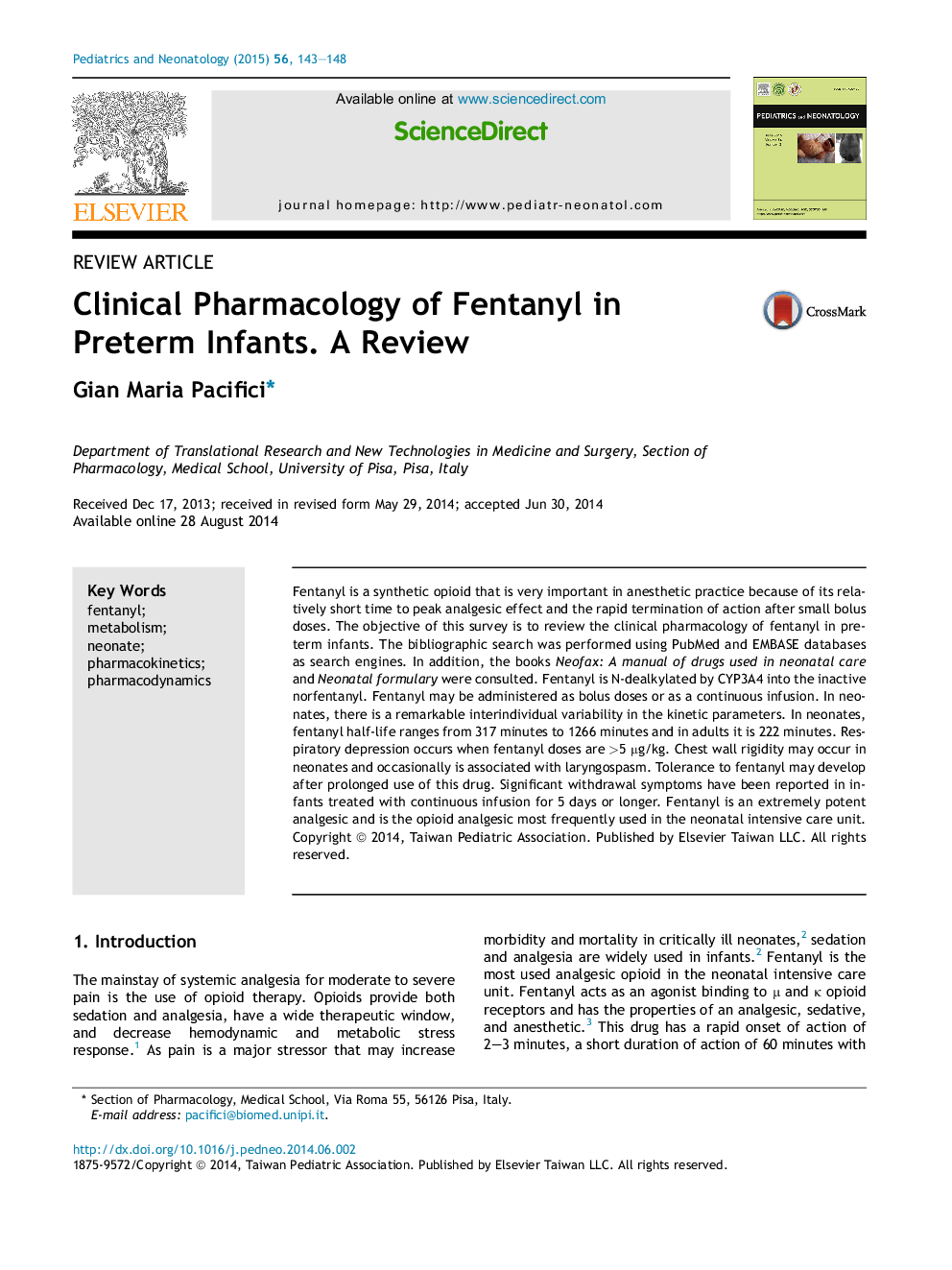| Article ID | Journal | Published Year | Pages | File Type |
|---|---|---|---|---|
| 4174975 | Pediatrics & Neonatology | 2015 | 6 Pages |
Fentanyl is a synthetic opioid that is very important in anesthetic practice because of its relatively short time to peak analgesic effect and the rapid termination of action after small bolus doses. The objective of this survey is to review the clinical pharmacology of fentanyl in preterm infants. The bibliographic search was performed using PubMed and EMBASE databases as search engines. In addition, the books Neofax: A manual of drugs used in neonatal care and Neonatal formulary were consulted. Fentanyl is N-dealkylated by CYP3A4 into the inactive norfentanyl. Fentanyl may be administered as bolus doses or as a continuous infusion. In neonates, there is a remarkable interindividual variability in the kinetic parameters. In neonates, fentanyl half-life ranges from 317 minutes to 1266 minutes and in adults it is 222 minutes. Respiratory depression occurs when fentanyl doses are >5 μg/kg. Chest wall rigidity may occur in neonates and occasionally is associated with laryngospasm. Tolerance to fentanyl may develop after prolonged use of this drug. Significant withdrawal symptoms have been reported in infants treated with continuous infusion for 5 days or longer. Fentanyl is an extremely potent analgesic and is the opioid analgesic most frequently used in the neonatal intensive care unit.
